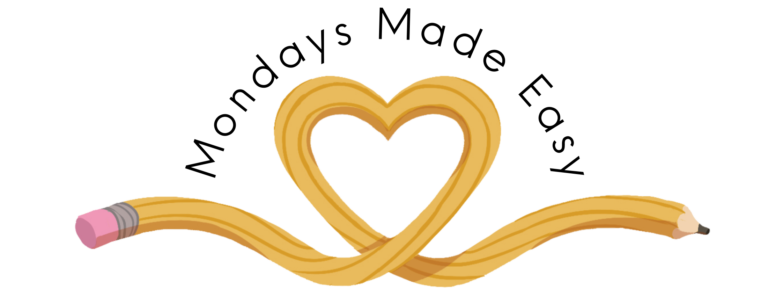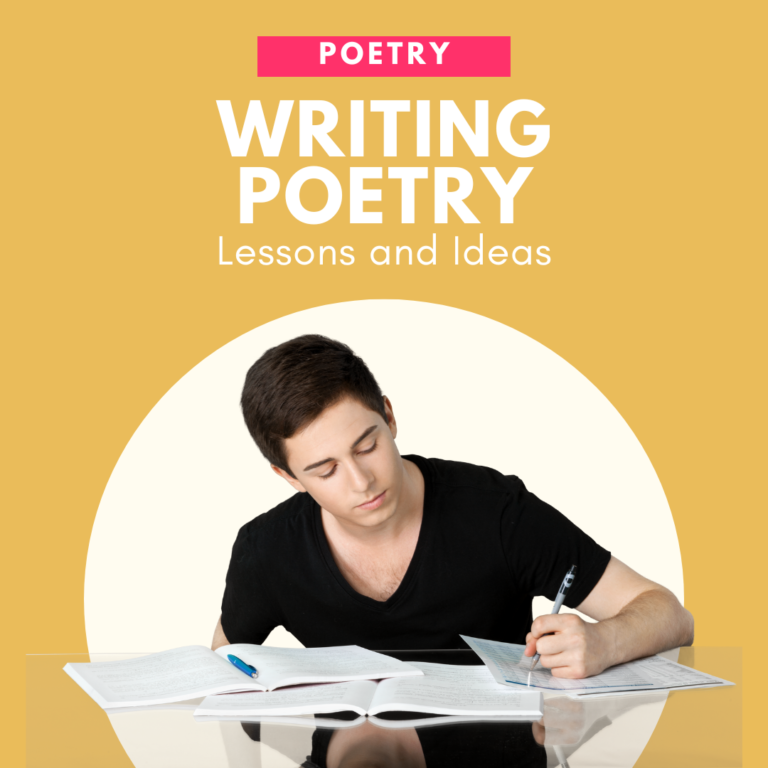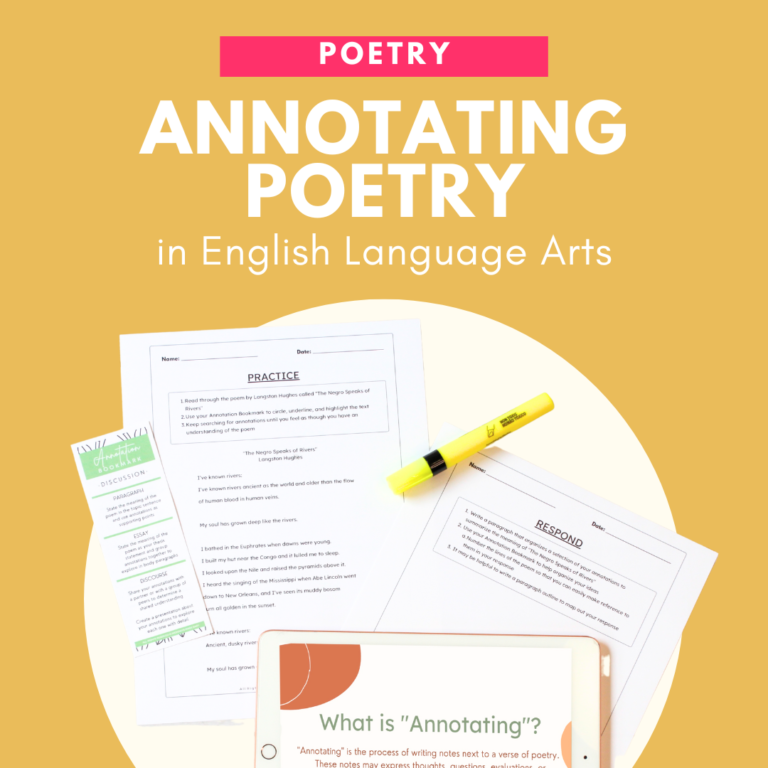If you’re a teacher searching for figurative language in songs, you’ve already tapped into one of the most effective strategies for teaching poetry. Song lyrics captivate students, making your poetry unit more engaging and relatable. They also provide rich, real-world examples of figurative language in popular culture, helping students connect poetic devices to the music they love.
In this blog post, you’ll discover engaging activities that use figurative language in songs to deepen students’ understanding of poetry. Plus, I’ll share lesson plan ideas and resources featuring song lyrics filled with vivid poetic devices to bring your lessons to life.
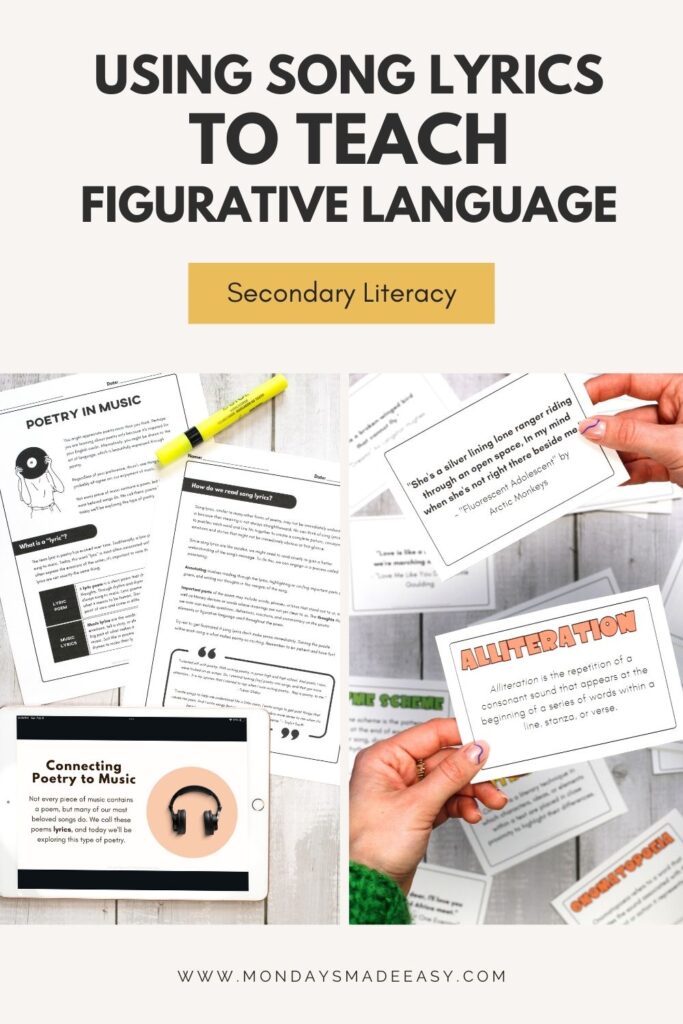
How do you encourage students to read poetry?
A few years ago, I took over a classroom for a teacher who was on maternity leave. She was absolutely thrilled at the timing of her leave because she was just about to begin her unit on poetry. “I hate poetry, and I don’t know how to teach it,” she admitted to me. I was surprised by this – there are a lot of subjects I’m reluctant to teach, but I always found teaching students poetry to be rewarding. Poetry is short, it is forgiving with grammar, and it relates to one of my students’ deepest passions: music.
Of course, not every student enjoys the subjective nature of poetry. A poem can be read with many different interpretations. Depending on the student, this is either a dream or a nightmare! It’s true that teaching poetry analysis can be challenging for students and teachers alike. This is why it is a great idea to start within your students’ comfort zones.
Not every student feels comfortable with analyzing poetry, but almost all of them have an artist or song that they adore. If you were to ask them what their top streamed song is about, I’m sure they would have a lot to say! They might even offer a few inferences based on their understanding of the artist’s biography or cultural references. We can use this excitement to hook them on reading poetry.
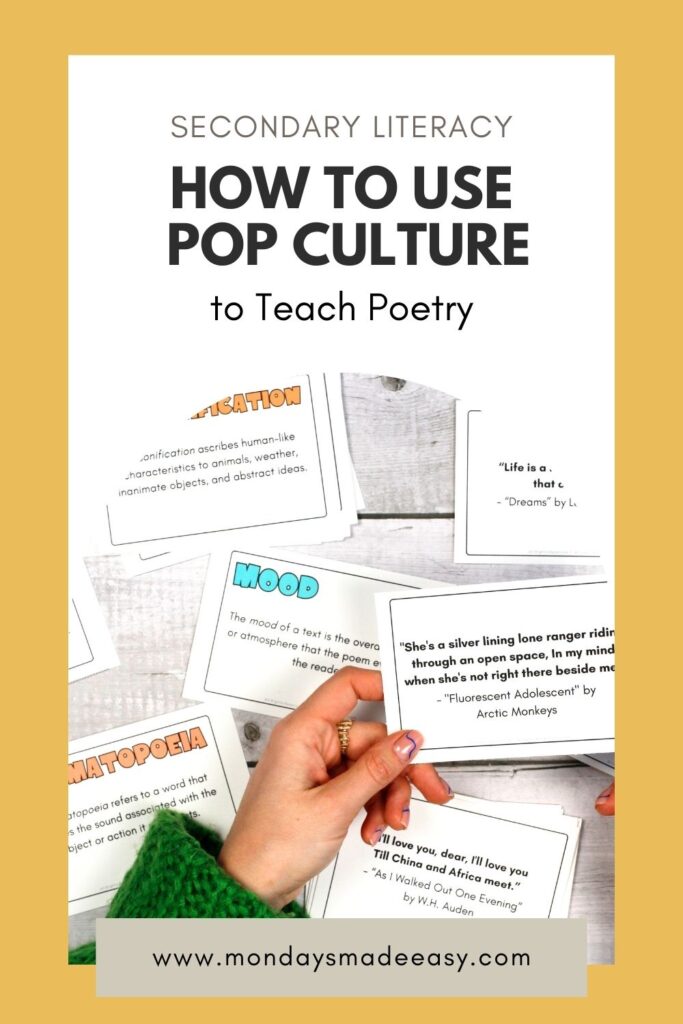
How do you identify figurative language?
To identify figurative language, students will need to understand key vocabulary. Some terms that can be helpful to know include: alliteration, anaphora, assonance, consonance, double entendre, enjambment, imagery, juxtaposition, metaphor, meter, mood, personification, simile, and tone – to name just a few!. A solid grasp of these concepts not only strengthens their poetry analysis but also deepens their understanding of figurative language in song lyrics, as many of these techniques appear in both poetry and music.
To solidify essential terminology, you can facilitate a vocabulary word wall. You can create templates for each poetic device and include a prompt to have students define the term and find an example. You can also use these pre-made poetic device word wall templates, which include a comprehensive answer key that doubles as a ready-to-print anchor chart.
Have each student fill out the vocabulary worksheets independently by creating individual workbooks. Alternatively, you can turn this into a collaborative activity by having students define different terms in groups. Students can then present their terms to the class before hanging them up on the word wall.
Once students have completed this activity, they will have a figurative language anchor chart in your classroom. Students can refer to this anchor chart during the entire unit on poetry and when analyzing figurative language in songs.
To reinforce understanding of these terms, you can use this figurative language matching game. These poetic device game cards showcase examples from both classic literature and contemporary song lyrics. To play, divide the class into small groups and distribute the game cards. The examples on these game cards explore figurative devices utilized by artists and poets including Lorde, Billie Eilish, Katy Perry, Kendrick Lamar, Queen, Adele, Bruno Mars, and many more!
How do you teach poetry analysis?
Now that students have explored the terminology of figurative language, they can dive deeper into poetry analysis. To teach poetry analysis, you can begin by modelling how to annotate poetry to students. You can continue to use students’ favorite song lyrics to hook them with this lesson, focusing on figurative language in songs as a practical application.
You can use this analyzing poetry lesson. This lesson will guide students through the relationship between poetry and song lyrics. You can scaffold annotating poetry by modeling the process using the lyrics to “Therefore I Am” by Billie Eilish. This resource includes an annotated example that you can use for reference.
Students can then select their own song lyrics to analyze using the extension activity provided.
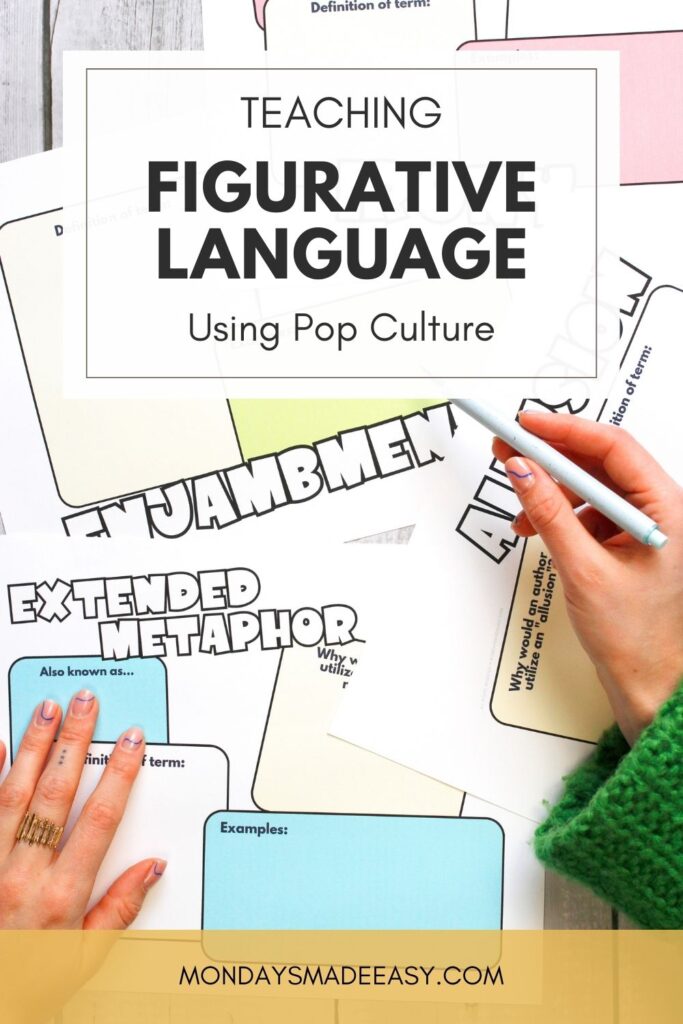
Finding Examples of Figurative Language in Songs
You can find virtually any type of figurative language in songs. So long as there are lyrics, you will find figurative language in every genre of music.
There are several resources online that explore figurative language in songs:
- I especially like Repeat Replay’s Top Picks: Songs with Figurative Language. This article highlights figurative devices in classic songs from the last few decades in music, including Simon and Garfunkel, Louis Armstrong, and Queen.
- LiteraryDevices.Net also shares modern examples of poetic devices in songs, including Katy Perry and Demi Lovato.
- Power Poetry also features a few poetic devices with examples that your students are sure to recognize! If they are fans of Lana Del Ray, Taylor Swift, or Billie Eilish, then they will love exploring these examples.
- If your students are more mature, Rap Genius has an incredible glossary of literary devices in hip-hop songs. Hip-hop and rap are rich sources for exploring the artful use of language. Given the explicit nature of many songs within these genres, you will want to be sure that your classroom environment is a suitable place to share this resource.
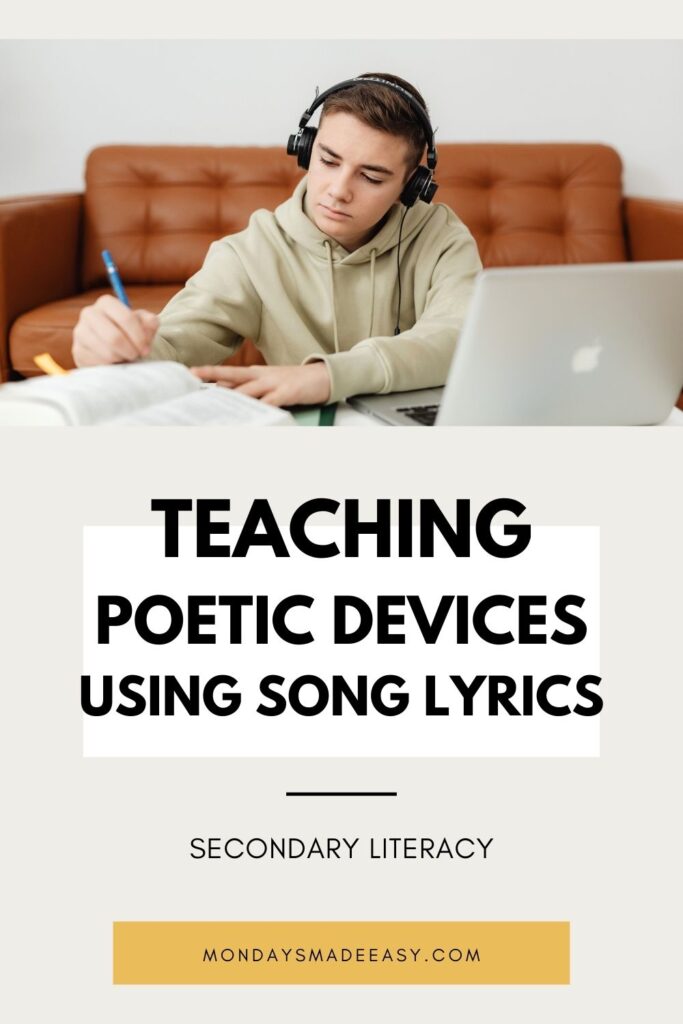
Using Figurative Language in Songs to Teach Poetry
If you’re a fan of teaching poetry, I hope this blog post has inspired a few new lesson plans and activities for your classroom. If you’re not – I hope studying figurative language in songs converts you! It is sure to hook even your most reluctant learners and help make poetry a little more relevant to their lives.
